Linnaea Borealis Flew into my Fuel
Day trip to a forest by the shore — and some thoughts about kids connection to nature
Yesterday I packed my backpack with snacks, coffee and thick book about Finnish nature. My mission was to go to forest with the kids and just spend some lazy time there. I saw myself sitting on mellow moss with a cup of coffee and watching the kids play in the playgroung of nature. The nature book was there because a 5-year-old was reading it and she wanted to take it along to keep reading in the forest. I thought ‘Okay, why not! We could use it to recognize some species.’
But it was not a lazy forest trip after all. It became an adventure, as it usually is with these wild kids.
Immediately after we entered the forest, the children started running. I noticed that blueberries were in the making, and twinflowers were blooming right now. We collected (well, I did, because the kids had run so far) one flower for our pressed plant collection.
After a while of walking in the forest, we reached the shoreline of Lake Päijänne. Waves were big and it was quite windy, but we sat right on the shoreline, beside the trees which reached over the water. While I was unpacking the snacks, the kids played camping — making campfires out of sticks.
We ate our snacks while watching the waves hit the shore. The kids threw some pieces of a bark, and we followed them rocking on the waves. My 8-year-old son asked if electric birds might exist someday. Then my 5-year-olds eyes lit up and she said: “I wanna be electric yarrow”. (That’s the plant she likes.) She started to poke others with her finger, saying “bzz” and they all ran to play.
So, it was my time to drink some coffee from a 'kuksa', a wooden cup. I poured coffee from a thermos and then put down the kuksa so I could close the thermos. And when I saw with a corner of my eye something foresty debris falling into my coffee, I couldn’t believe what it was: a flower of the twinflower! My first thought was that no one’s ever gonna believe that it landed there by itself.
But I got some amazing pictures of it. I almost forgot my kids while taking them!
After snack time (and dozens of 'coffee & floating flower' pictures) we continued our way along a path that followed the shoreline. This old birch stole our attention with its thick, wavy bark. As if it had burst out of its own skin.
We have our own habit that we count how many different species, mosses, flowers etc. we can find in one spot, like on top of a big rock or around a tree stump. Usually I ask the kids “How many you can find? and they start to count. Usually they found more than I expected. Sometimes I ask the same question when we are somewhere built-up place, and they can’t find many. Then I make them compare and think about what biodiversity means.
So, this time we found four different moss types in a square meter area, along with two different lichens. This feathermoss (Ptilium crista-castrensis) is one of my favourite. We took some time to observe it really close.
We also found boletes. These two are Leccinum versipelle. I usually eat all mushrooms but not these. I have had very bad vomiting because of these twice. They need to be cooked very well. I enjoy eating all other boletes. These I enjoy with my eyes only.
All that time I carried that heavy nature book in my backpack. And we didn’t even glance at it. But it was a nice forest walk, like they always are. And I could see how good it was for children. They got fresh forest air, beneficial microbes and were once again developing their motor skills. That makes carrying even more extra books that end up unread totally worth it!
Writing about nature takes time and coffee. If you’d like to support, here’s how. ⤵





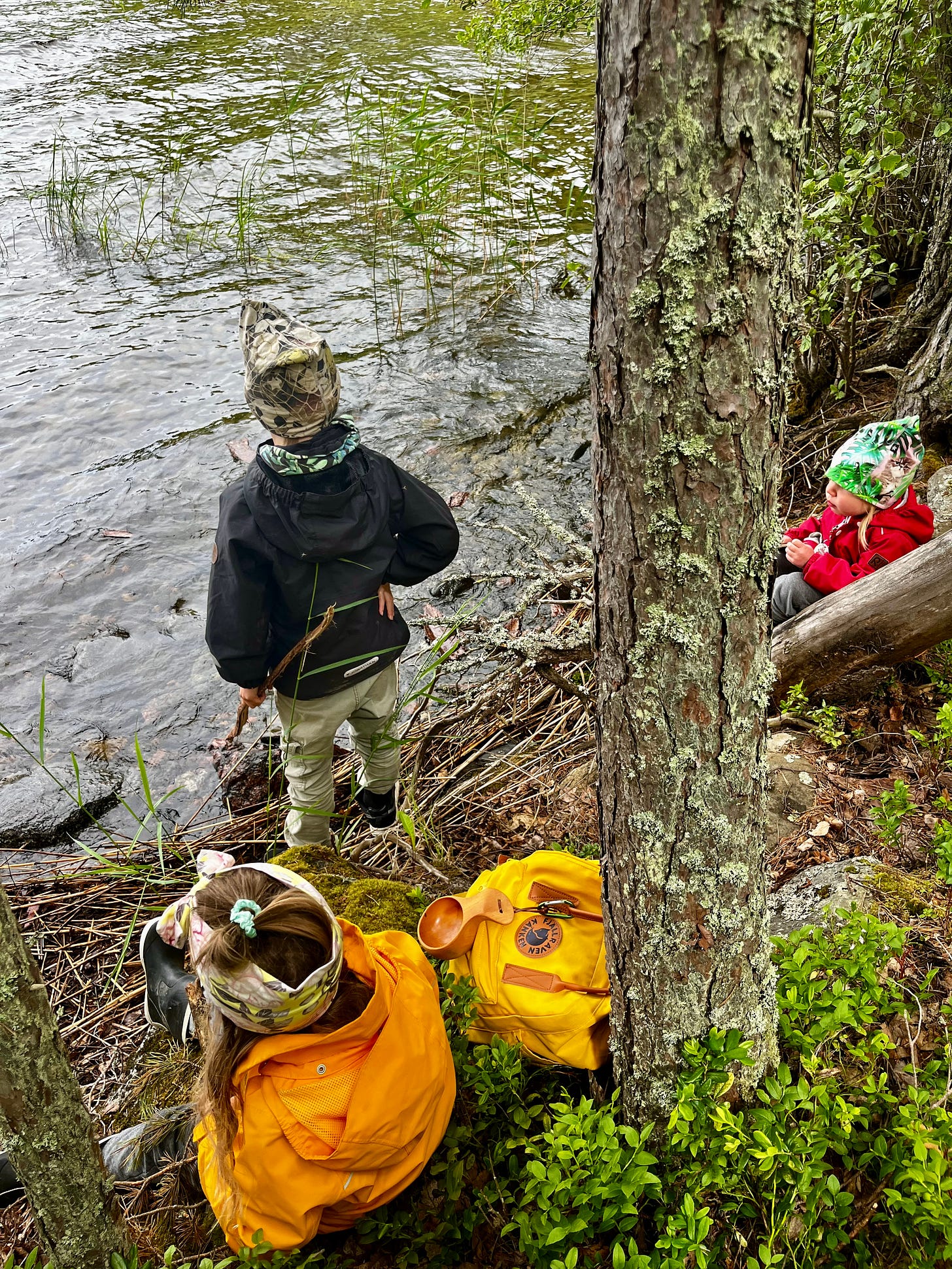
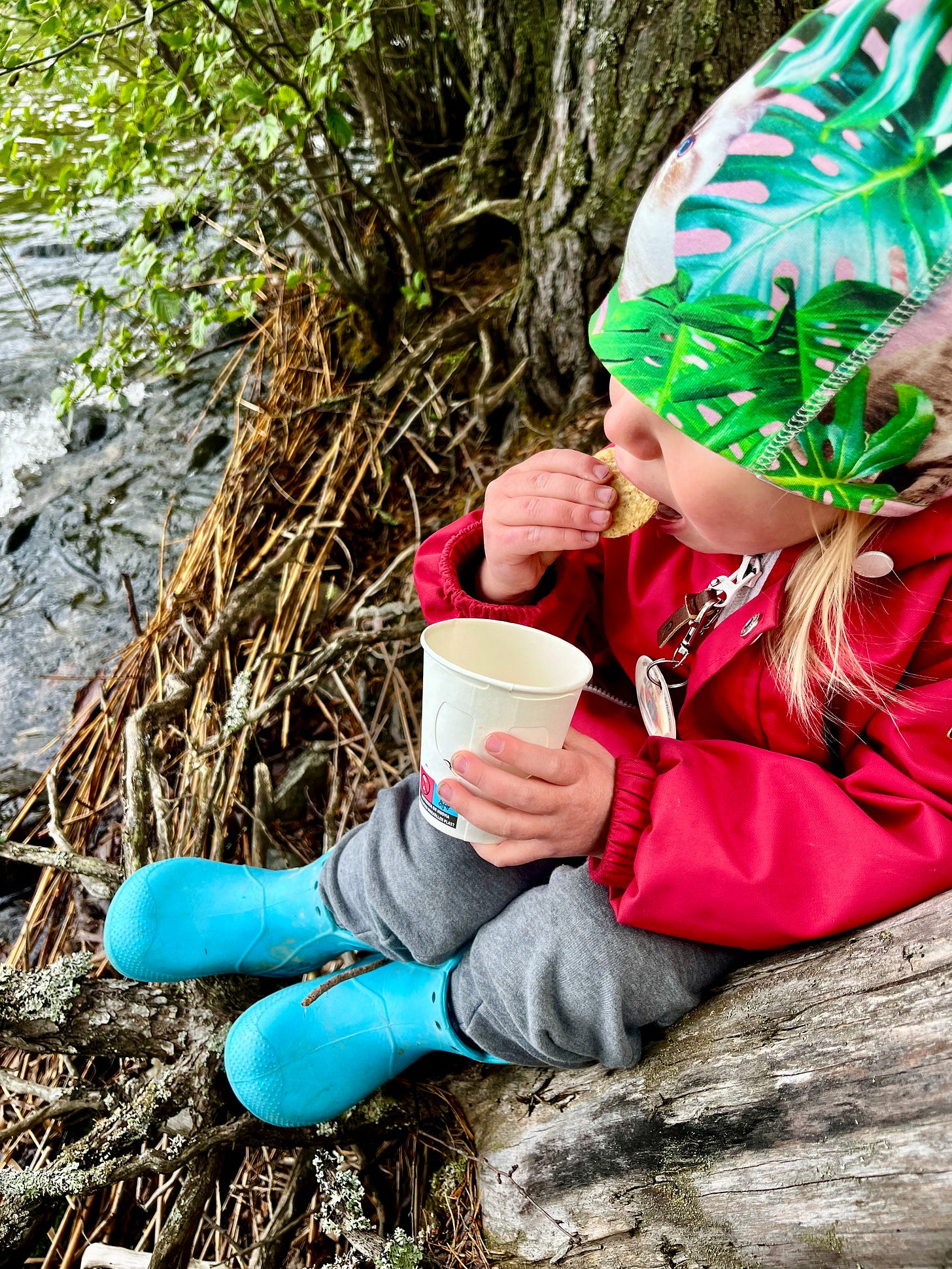


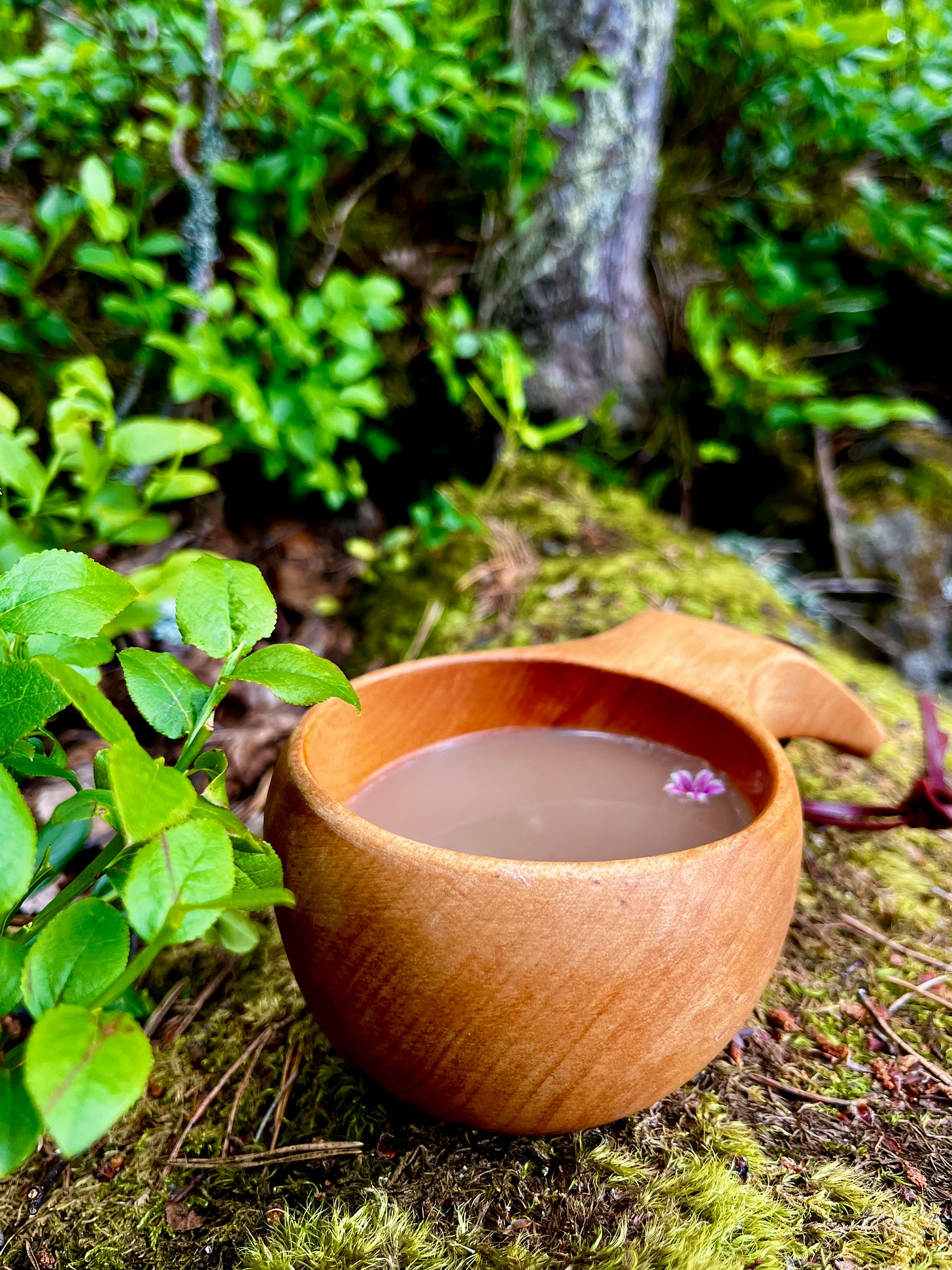
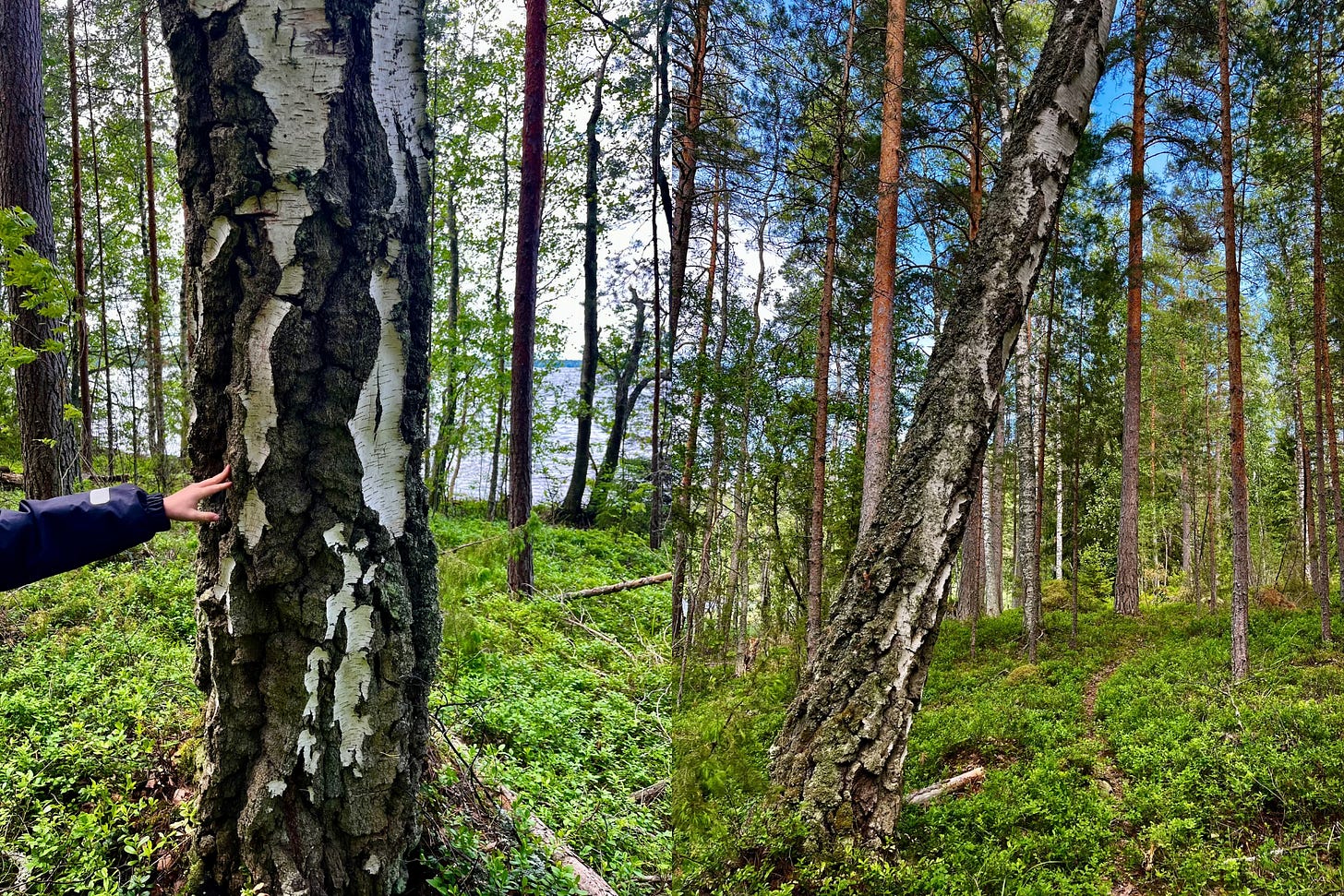
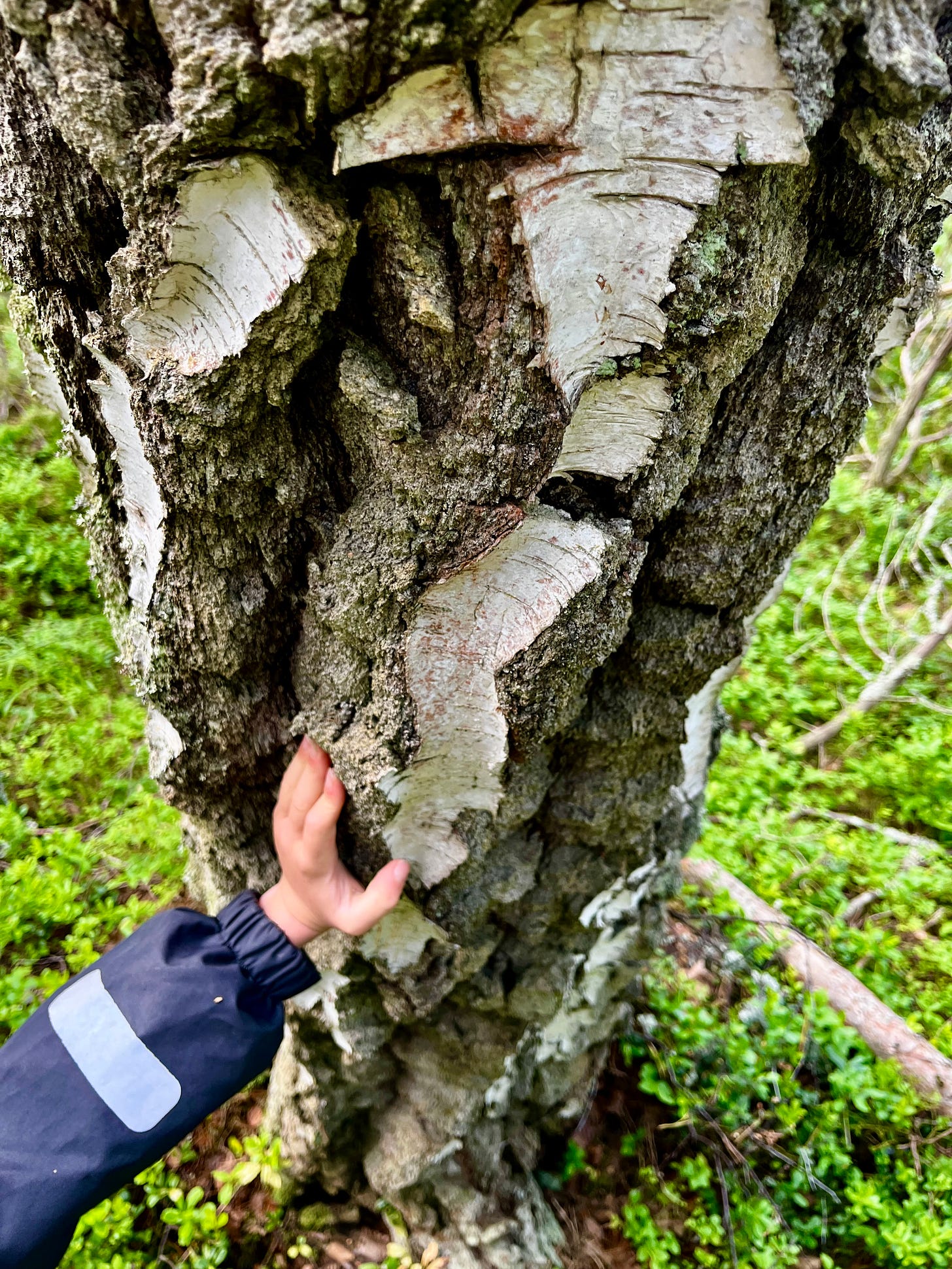
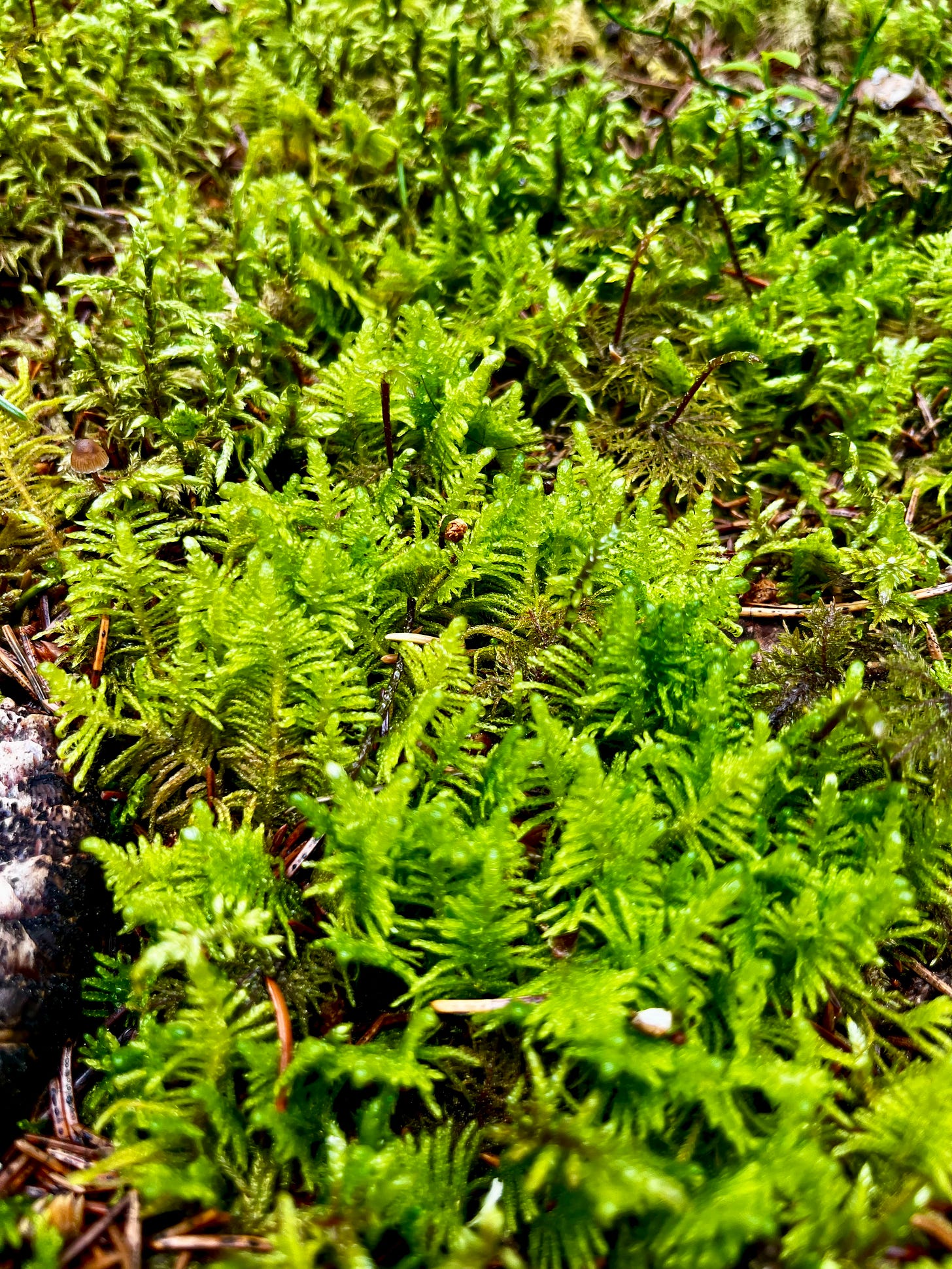
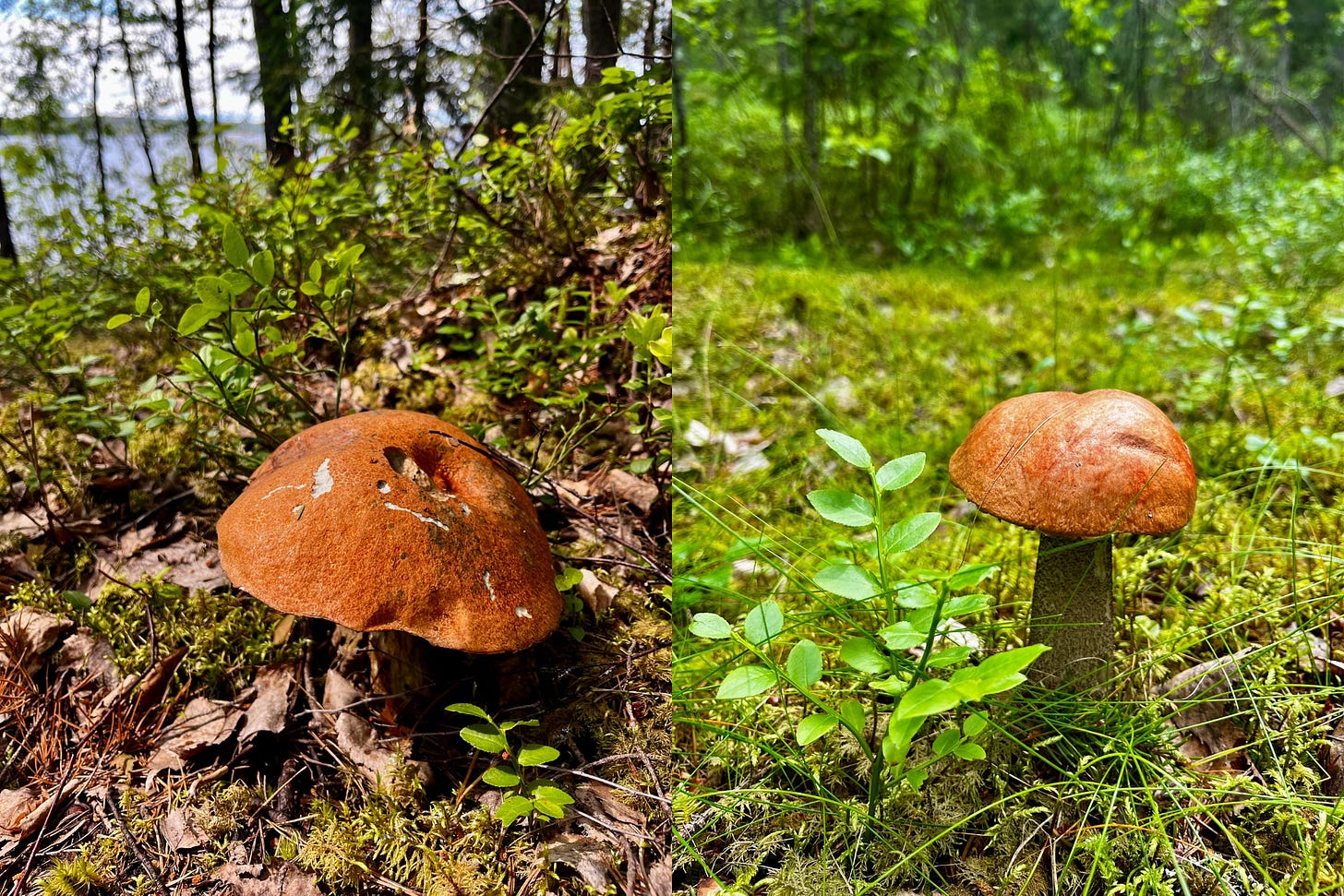
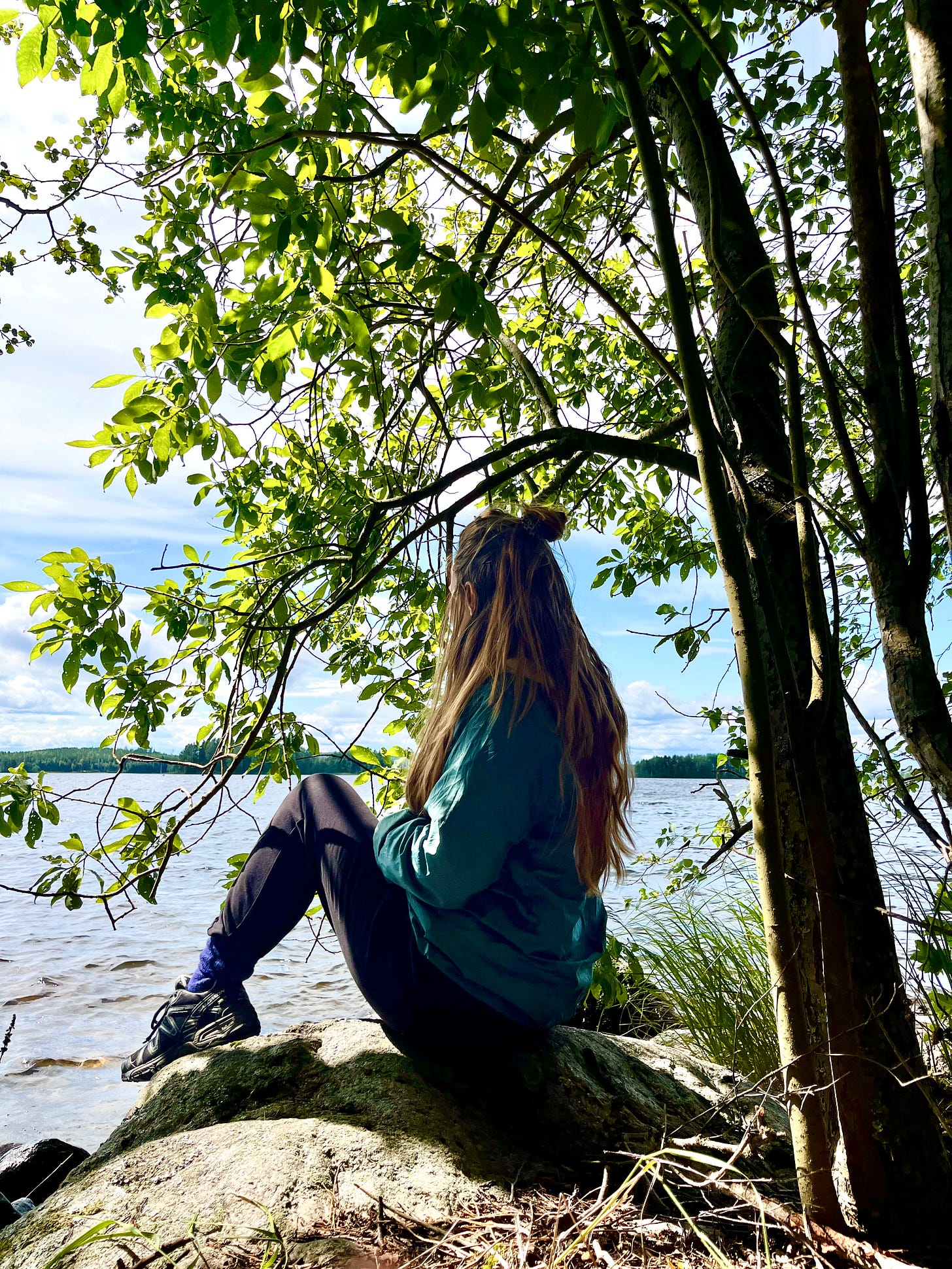


Excellent! Get young humans out into nature early and often! Ptilium crista-castrensis is one of my very favorite “Northwoods” mosses…🙂👍
The kuksa is beautiful!